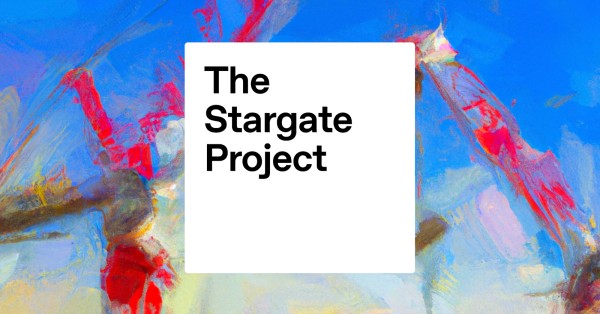Nokia Bell Labs and Vale have announced a new joint effort to create an advanced network and cognitive monitoring service aimed at improving mining operations. This collaboration focuses on enhancing productivity and safety in one of the world’s most complex and hazardous industries: mining. By leveraging data from connected systems like hauling trucks and autonomous drillers, the project will boost both operational performance and worker safety.
Transforming Mining with 5G and Cognitive Monitoring
As the mining industry continues to evolve, the demand for enhanced safety and productivity grows. Nokia Bell Labs, the research arm of Nokia, and Vale, one of the largest producers of iron ore and nickel, have formed a strategic partnership. Their mission? To create a cognitive monitoring network service that will transform mining operations. This service will utilize advanced data analytics to enhance the performance, reliability, and safety of mining systems.
Addressing Mining’s Complex Challenges with 5G Networks
Mining operations are inherently risky and complex. In addition to safety concerns, managing the logistics of large-scale equipment such as hauling trucks and autonomous drillers requires precise and reliable communication systems. Downtime and communication lapses can lead to safety hazards, operational inefficiencies, and significant financial losses. Vale’s Carajás mine, the largest open-pit iron ore mine globally, is no exception.
In such dynamic environments, Private Networks play a crucial role. These mission-critical networks must handle vast amounts of data and ensure real-time communication to avoid costly downtime and potential safety incidents. Integrating multiple layers of cognitive services into these networks can further optimize operational decisions.
Nokia Bell Labs and Vale’s Cognitive Digital Mine Solution
To address these challenges, Nokia Bell Labs and Vale are developing a cognitive monitoring service designed to connect and monitor various mining systems in real-time. This collaboration leverages the Nokia Industrial eXperience (NiX) research platform to create a comprehensive Cognitive Digital Mine (CDM) solution. By combining data from mine production systems like trucks and autonomous machinery with network KPIs, the service will provide valuable insights that enable predictive maintenance, enhanced decision-making, and operational efficiency.
This cognitive network service will act as a “digital twin” of the mine, integrating data streams from multiple sources and applying AI-powered analytics to provide real-time feedback for mission-critical operations. With 5G connectivity, this solution can offer ultra-reliable, low-latency communication, ensuring that safety and productivity measures are always optimized.
Proof of Concept: Carajás Mine as a Testbed for Smart Mining
The collaboration builds on the long-standing relationship between Nokia and Vale at Vale’s autonomous iron ore mine in Carajás, Brazil. Carajás serves as a testing ground for this cutting-edge technology, allowing both companies to fine-tune their solutions in one of the harshest and most challenging environments. Results from this testbed suggest that the cognitive monitoring network can significantly enhance the efficiency and safety of mine operations.
The Network Cognitive Digital Mine initiative under Nokia’s Strategy and Technology organization is already showing potential in transforming complex industrial operations by integrating cognitive capabilities into network infrastructure.
Nokia’s 5G and AI Technologies: Enhancing Mining Operations
The project employs Nokia Bell Labs’ advanced research in 5G Private Networks, which ensures high-speed, low-latency connectivity essential for real-time monitoring of mining operations. This network integrates seamlessly with Vale’s existing infrastructure, providing a future-proof solution for their autonomous mining equipment.
By utilizing the Nokia NiX platform, the technology delivers a holistic approach, covering everything from data collection to analytics. The use of AI and Edge Computing further enhances the system’s ability to sense, think, and act ahead of time, addressing potential issues before they become critical.
Key Benefits of 5G Cognitive Monitoring for Mining
The cognitive monitoring service provides several clear advantages for Vale’s mining operations:
- Enhanced Safety: Real-time monitoring allows operators to make informed decisions that prioritize worker safety.
- Increased Efficiency: The ability to predict and resolve issues before they impact operations reduces downtime and maximizes productivity.
- Operational Optimization: By correlating machine data with connectivity KPIs, the service optimizes network and equipment performance, reducing costs and improving process outcomes.
The Broader Impact of 5G on Mining and Industrial Sectors
The collaboration between Nokia Bell Labs and Vale sets a new standard for smart mining. It demonstrates how digital transformation, powered by Private Networks and cognitive monitoring, can reshape industrial operations. The ability to provide real-time, actionable insights has far-reaching implications, not only for mining but for other industries like utilities, transport, and ports, where safety and reliability are paramount.
Nokia Bell Labs and Vale: Driving Innovation in Mining
Nokia Bell Labs plays a pivotal role by providing cutting-edge technology and research expertise. As a leader in connectivity innovation, Nokia enables mission-critical communication systems that allow industries like mining to operate safely and efficiently. The NiX platform and AI-driven analytics from Nokia are instrumental in developing this cognitive monitoring solution.
Vale, on the other hand, contributes its extensive mining expertise. With operations in some of the most challenging environments globally, Vale provides invaluable insights into the practical needs of mining operations. Together, the two companies are pioneering a safer and more productive future for mining.
Collaborating to Deliver a Cognitive Monitoring Network for Mining
This project is supported by a broader ecosystem of partners, including network equipment providers, AI developers, and system integrators. These collaborators ensure that Nokia Bell Labs and Vale have the necessary tools and infrastructure to develop a robust cognitive monitoring system. Their collective expertise in Edge Computing, AI, and 5G technologies enables the seamless integration of advanced connectivity solutions into Vale’s operations.
Current Development Status of the Cognitive Digital Mine Project
The cognitive monitoring project is currently under development, with initial tests already showing promising results at Vale’s Carajás mine. As this collaboration moves forward, the companies are expected to scale the solution across Vale’s other mining operations globally, further enhancing safety and productivity across the board.
The project officially kicked off in October 2024, with a roadmap for deployment across Vale’s mining sites over the next several years. Initial testing and pilot phases will continue into 2025, with full-scale deployment targeted for 2026.
Leaders Endorse 5G Cognitive Monitoring for Mining
Lelio Di Martino, General Manager of the Cognitive Digital Mine Venture at Nokia, highlighted the importance of this collaboration: “Together, we will drive a revolution that will change the way we design and control networks—and mines.”
Mario Azevedo, Global Manager of Engineering and Technology Projects at Vale, added: “By integrating advanced connectivity technologies with Nokia Bell Labs, we ensure more robust and consistent processes across IT and Operational groups, implement real-time monitoring for a safer working environment, and optimize processes to reduce downtime and increase efficiency.”
This strategic partnership between Nokia Bell Labs and Vale represents a significant step forward in the future of smart mining, combining 5G and AI to create safer and more efficient mining operations.





















